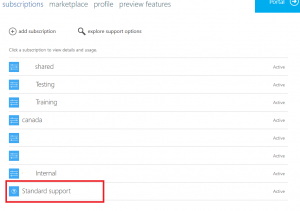As a general practice, outbound Internet access should be denied except for approved destinations. This is referenced in NIST 800-41 as a “deny by default” posture.
Achieving this within Azure Infrastructure as a Service in a practical and economical way without breaking a large amount of services is quite difficult at the moment.
If Outbound Internet is fully denied, some of the commonly used services of Azure will cease to work:
- Azure Backup
- Log Analytics
- Azure State Configuration (DSC)
- Azure Update Management
- Azure Security Center
- Windows Update
Some of these are not as difficult to solve – Service Tags on NSG rules can allow Azure services where they have been defined by Microsoft. As of Ignite 2018 in late September, there are new service tags covering entire regions, or all of Azure (“AzureCloud”). This means you can allow most of those services above to function and still deny general Internet outbound.
Additional Service Tags for Windows Update, or custom definitions are supposed to be coming in the future, but this doesn’t fully resolve the problem.
What if your application has a GIS component, and it needs to reach *.arcgisonline.com? What if your users have a legitimate reason to access a particular website? It isn’t good enough to just resolve that IP address one time and add it to an NSG.
What is really needed is a method to allow access to a fully qualified domain name (FQDN), particularly with wildcard support.
Here are some possible solutions:
Implement a 3rd Party network virtualization appliance (NVA)
This is the most common response that I see recommended to the outbound problem. Unfortunately, it is really expensive, and overkill if you’re only address this one particular problem. One has to consider high availability of the resources, as well as management of them since you’re just adding more IaaS into your environment, which is what we’re all trying to get away from when we’re using the cloud isn’t it?
Some vendors may not support wildcard FQDN in it’s ACLs (Barracuda CloudGen last I checked), which means you can’t support things like Windows Update where no published IP list exists.
If the implementation is anything like SonicWALL’s method, it will have difficulty being reliable – this relies upon the SonicWALL using the same DNS server as the client (calling it ‘sanctioned’) which may or may not be true in your Azure environment with the use of Azure DNS or external providers.
Implement Azure Firewall
Azure Firewall is new on the scene and released to General Availability as of late September 2018. It supports the use of FQDN references in application rules, and while I haven’t personally tested it, the example deployment template is shown to allow an outbound rule to *microsoft.com.
Confusingly, their documentation states that FQDN tags can’t be custom created, but I believe this just references groups of FQDN, not individual items.
Azure Firewall solves the problem of deploying more IaaS, and it’s natively highly available. However it again isn’t cheap, at $1.25/hour USD it is a high price to pay for just this one feature.
Wait until FQDN support exists in an NSG rule
It has been noted on the Microsoft feedback site that NSG rules containing FQDN is a roadmap item, but since this hasn’t received the “Planned” designation yet, I expect it is very far down the roadmap; particularly considering this feature is available in the Azure Firewall.
Build something custom – Azure Function or runbook which resolves DNS and adds it to your NSG
I’ve toyed with the idea of building a custom Azure Function or Automation runbook which can resolve a record and add it to an NSG. I’ll have a post on the Function side of this coming soon that describes how it would work, and the limitations that made me discard the idea.
Realistically, this isn’t a long-term viable solution as it doesn’t solve the wildcard problem.
Utilize an outbound transparent proxy server
This method involves trusting some other source to proxy your outbound traffic and depending on that source, gives a large amount of flexibility to achieve the outbound denial without breaking your services.
This could be an IaaS resource running Squid or WinGate (a product I’m currently testing for this purpose), or it could be an external 3rd party service like zScaler which specializes in access control of this nature.
To make this work, your proxy must be able to be identified by some kind of static IP to allow it through the NSG, but after that the whitelisting could happen within the proxy service itself.
I see this as the most viable method of solving the problem until either FQDN support exists for NSG, or Azure Firewall pricing comes down with competition from 3rd party vendors.

